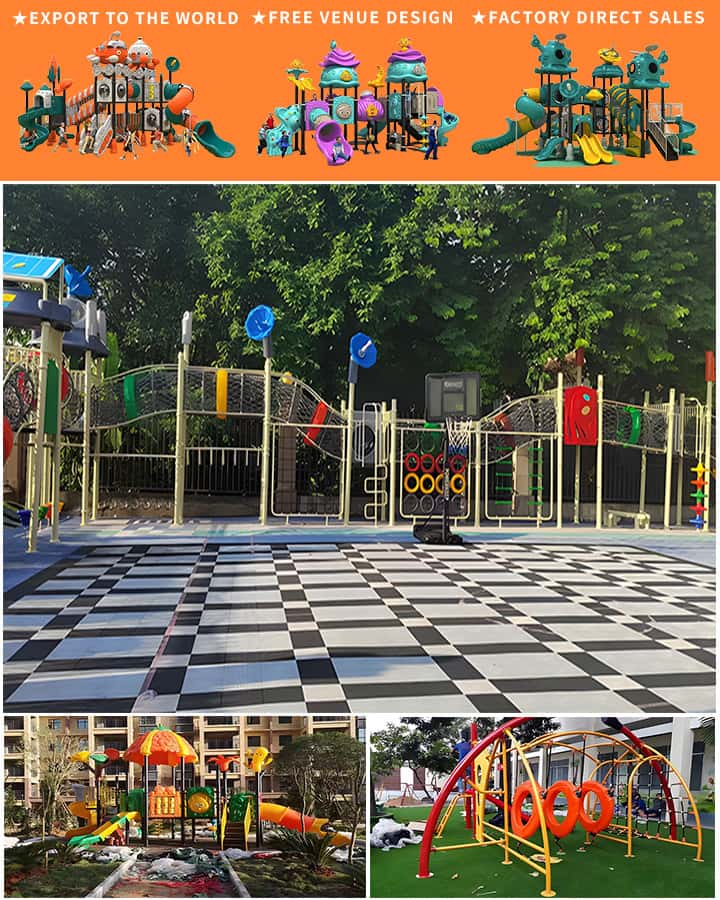Designing an outdoor playground for kids is not just about providing a space for them to run and play; it’s about creating an environment that stimulates their imagination, encourages physical activity, and supports their developmental growth. Whether you are a parent looking to enhance your backyard or a community organizer planning a local park, here’s how to create the ultimate outdoor playground for kids.
Planning and Design
Before laying down the first piece of equipment, thorough planning is essential. Start by assessing the available space and considering the age range of the children who will use the playground. This will determine the types of structures and activities that are appropriate and safe. Incorporating elements like slides, swings, climbing frames, and seesaws ensures a variety of physical challenges.
Safety should always be a top priority. Ensure that the playground is built on impact-absorbing surfaces such as rubber mats or wood chips to prevent injuries from falls. All equipment should be constructed with smooth edges and free of any hazardous materials. Additionally, consider installing protective barriers around the playground area to minimize risks from outside traffic or other potential dangers.
Educational Elements
An engaging playground also incorporates educational elements, turning playtime into a learning experience. Interactive panels with numbers, letters, and shapes encourage cognitive development. Nature-inspired features like small gardens or water tables can teach kids about plant life and basic science concepts. Chalkboards or mural walls offer creative outlets for artistic expression.

Inclusive Design
Inclusivity is vital in modern playground design. Ensure that the playground caters to children of all abilities by incorporating wheelchair-accessible equipment and sensory-rich areas. Features like low-height swings, transfer stations, and tactile play panels provide opportunities for children with disabilities to join in the fun.
The Power of Nature
Natural elements can significantly enhance an outdoor playground. Incorporating trees, shrubs, and grassy areas provides shade and a connection to nature. Natural materials like logs, boulders, and sandpits invite imaginative play and exploration. These elements can also serve as part of the educational landscape, teaching children about the environment and encouraging environmental stewardship.
Community Involvement
Community input can make the playground more appealing and functional. Engage local families, teachers, and even the kids themselves in the planning process. Surveys and focus group discussions can reveal what specific needs and preferences the community has. Regular maintenance and updates based on community feedback ensure that the playground remains enjoyable and safe over time.
Sustainable Practices
Sustainability should also play a role in playground design. Use eco-friendly materials for construction and consider renewable energy sources like solar panels for lighting. Rainwater harvesting systems can keep sandpits and gardens watered sustainably. Teaching children about the importance of sustainability through their playground can foster lifelong eco-conscious habits.
Fun Activities
Finally, think about adding some fun activities beyond the traditional playground equipment. A small stage can host performances and storytelling sessions, promoting cultural and social skills. Sports areas like mini soccer fields or basketball hoops encourage teamwork and physical fitness. Quiet zones with benches, reading nooks, or hammocks provide spaces for relaxation and reflection.
Conclusion
Creating the ultimate outdoor playground for kids involves thoughtful planning, safety considerations, educational integration, inclusivity, and a touch of creativity. By focusing on these elements, you can design a space that not only entertains but also supports the physical, cognitive, and emotional development of children. An outdoor playground is more than just a place to play—it’s a crucial part of growing up, filled with opportunities for learning, discovery, and joy.




